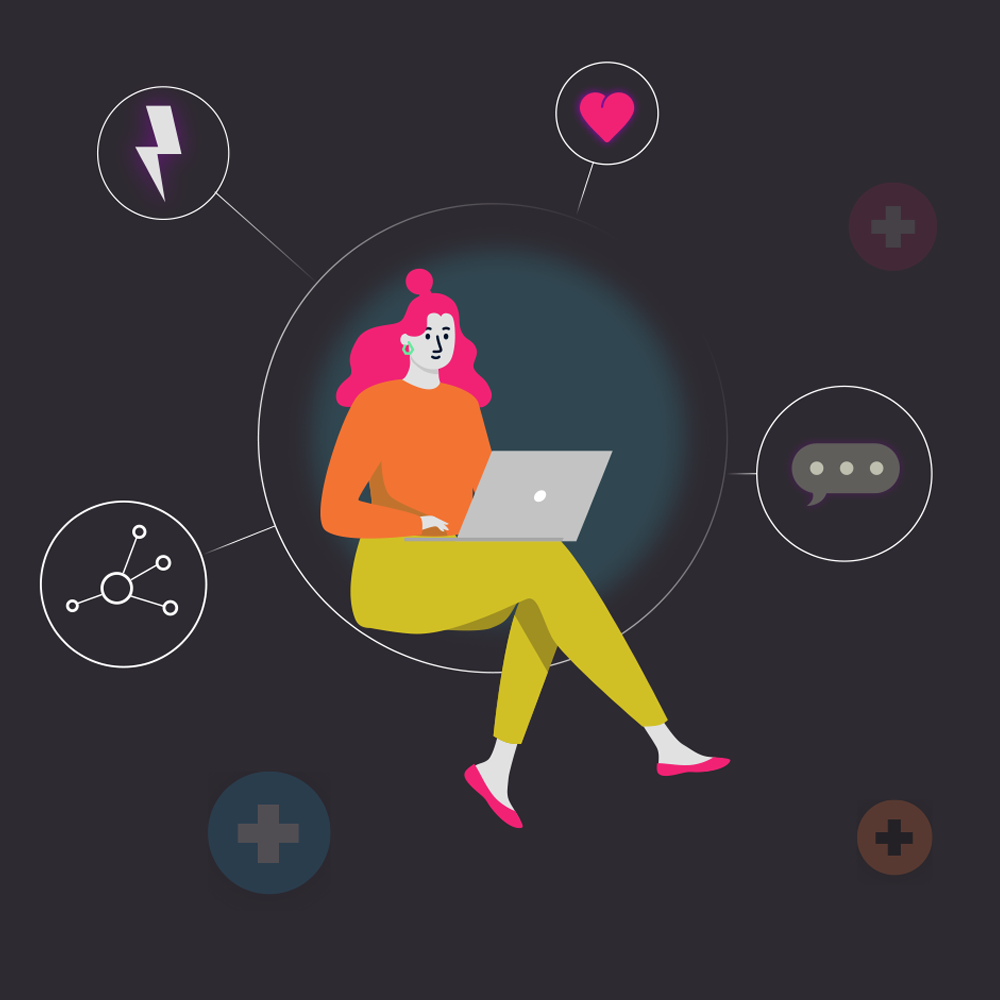Learning Solutions that support Digital Services
“Stop selling, start helping”
Zig Ziglar, Author and Motivational Speaker
As the automotive sector transforms from a product-led industry to one that sells a mobility service, the spotlight on Customer Experience is intensifying.
Digital services are especially seen as a way to tailor a customer’s vehicle more closely to their ownership needs and preferences. It also helps to ensure the customer invests themselves fully into the brand’s core values.
The way that new products and services are delivered is changing, too. Previously, new features were bundled into ‘static’ mid-cycle vehicle updates. Now, Over-the-Air (OTA) technology can offer more than just software upgrades. They are capable of delivering, direct to the customer, new connectivity features and even ground-breaking Advanced Driver Assistance System (ADAS) technology.
This has led to a reassessment of what constitutes impactful Learning and Development (L&D) solutions. It also informs how we support front-line staff who are both the organisation’s brand ambassador and the customer’s product and ownership advisor.
Crucially, we need to consider the following elements:
The speed at which upgrades, and new features are delivered
Customers are now capable of receiving these features even faster than a sales advisor can potentially understand them. So, we need learning solutions that are delivered quickly, and which impart sufficient information to keep the customer advisor ahead of the curveThe intangible nature of many new technologies
Whilst we are all focused on delivering learning that highlights the benefits of a product or service to a customer, often these launches feature an intangible product that the customer cannot experience before they buy. In addition, customers cannot be expected to become familiar with the functionality of every new release, or to make regular use of every different feature
The way new products are marketed
Brand loyalty is a central component of many marketing initiatives and increasingly, new product and service launches reflect this approach. For example, automotive brands frequently offer their latest innovations to their customers on a subscription basis or as a download within an App, with the aim of further galvanising the relationship
Speed isn’t everything
While OTA upgrades can potentially deliver groundbreaking technology faster than you can read this sentence, it doesn’t mean that the learning and development asset that supports a new product, can’t be scoped in advance.
Many new products are built on existing technology and offer enhancements designed to add customer value. The initial L&D approach should consider if there is a sufficient level of understanding among learners that relates to the product’s underpinnings. For example:
If this is an in-app launch, is the customer advisor familiar with the existing offering, and do they understand where the new product or service fits in, or what it replaces?
What are the specific customer benefits that the product or service offers, which align with the customer’s lifestyle? Which segment of the market or customer group does the new product or service focus on?
What does the customer need to know now and what can wait until later? Rapid product or service launches help us to focus on iterative learning content, which provides just the right amount of information. Additional, or updated content can be planned in for when it is needed
Equally important is consideration of deleted services. Is there likely to be customer disappointment that we need to mitigate? How does a new product or service perform a similar function, but more effectively, and have we explained how?
Intangible – but intuitive?
Newly launched features and services are often intangible as the customer cannot experience them until they use them. An enhanced media streaming service, or a preferential electric vehicle home charging plan can offer a customer plenty of value but might be harder for them to visualise the benefits. There are some key elements that will help to create impactful learning assets:
Sell the experience. Rather than simply listing all the functionality of the service, start with an explanation of why the offering will reduce time, offer peace of mind, or save the customer money
Reinforce the product’s ease of use. Most digital services are designed to be highly intuitive, so there need only be a minimal amount of learning content that explains how the feature is added or set up. Focus instead on how effortless the system is to operate and what it adds to the customer’s lifestyle, but remain aware of the likely level of understanding and technological savvy of the target customer
Building relationships
As the automotive sector transforms, brand values, and brand loyalty, have never been more influential in the approach to marketing new products and services. With customer experience at the heart of what a brand stands for, Digital Services have a vital role in extending brand values from a set of beliefs about a product, to encompassing a more comprehensive range of ownership experiences.
When developing learning assets, there are several touchstones that need to underpin our approach. For example:
Digital Services, such as an innovative new driver assistance system, or a home charging energy solution, are designed to inspire and delight the customer. But a poor experience can badly damage the brand’s reputation. We need to remember that social media can be very unforgiving about poorly designed product releases, and that subscription services are becoming important revenue streams. We must therefore ensure that learning initiatives not only reinforce features and benefits, but also offer advice on the best way to support the customer throughout their ownership experience. Crucially, they should also explain how the customer can resolve any frustrations directly with the brand
Brand loyalty is especially dependent on trust levels. If a customer has already had a positive experience with a previously launched digital service, they are less likely to question the viability of an additional feature. The majority of customers, however, will be new to the concept of a subscription service that might be the gateway to, for example, an advanced, real-time navigation system. So where free trial periods, or ‘opt-in/opt-out’ solutions are available, there should be additional emphasis placed on these in the learning modules we create
“The real magic is in making the intangible idea, the creative impulse, manifest and live in our reality”
Mark Ryan, Author and Actor
It is already understood that learning solutions need to be created from a customer experience perspective. And because of this, we need to avoid overwhelming both the learner and the customer with too much information. This is especially true as digital services are usually intangible and therefore harder to visualise and impossible to touch and feel. Focus, always, on how the product aligns with the customer’s needs and lifestyle.
In addition, the need for a fast turnaround is another reason why iterative content is key. As well as ensuring the level of information is succinct, bite-size learning is also quicker to create and can be developed in a series of brand-aligned ‘learning stepping stones’.
The more ways the customer can feel connected to the brand, the more their loyalty will grow. The key is to ensure that we have highlighted why a digital service enhances their ownership experience today, tomorrow and into the future.


